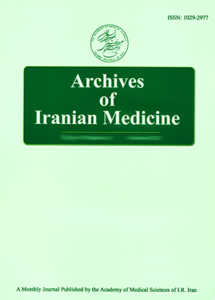Determinants of weight change in a longitudinal study of Iranian adults: Isfahan Cohort Study
Authors
1
Toggle Title
Toggle Content goes here
Abstract
Background: The extensive rise in the prevalence of obesity is a matter of great concern and poses a global threat to people’s health. Obesity and overweight are considered to be the consequence of a collection of conditions including genetic, social, environmental, behavioral, and physical factors. The aim of this study was to investigate the determinants of weight change over seven years in a prospective study in an Iranian population.
Methods: The Isfahan Cohort Study (ICS) is an ongoing longitudinal study started in 2001. A total of 6504 adults aged ≥ 35 years participated in this study. Subjects were followed every 2 years by phone calls. The interview and measurements were repeated in 2007 for 3284 subjects with the same protocol as the baseline study. Obesity indices, including body mass index (BMI) and waist circumference (WC) were measured at both time points. For the purpose of data analysis, multiple multinomial logistic regression, Chi-square, and ANOVA tests were used.
Results: In males, weight gain was more frequent from normal to overweight (11.7%), while in females, weight gain was observed more from overweight to obesity (11.4%). Younger individuals gained weight more than older individuals (P < 0.001); it was the same for lower education level (P = 0.007). Weight gain was negatively (OR: 0.98, 95% CI: 0.97-0.99 in male and OR: 0.96, 95% CI: 0.95-0.98 in female) and weight loss was positively (OR: 1.03, 95% CI: 1.01-1.05 in male and OR: 1.02, 95% CI: 1.01-1.04 in female) associated with age in both sexes. Education more than 12 years in women and between 6-12 years in men was negatively associated with weight gain while smoking was positively related to weight loss in females and weight gain in males. Conclusion: Our data showed that multiple factors affect weight change, among which age, smoking, and education are important determinants in Iranian adults.
Keywords:Obesity, overweight, dietary index, physical activity, weight gain
How to Cite
. PMID:25065276

